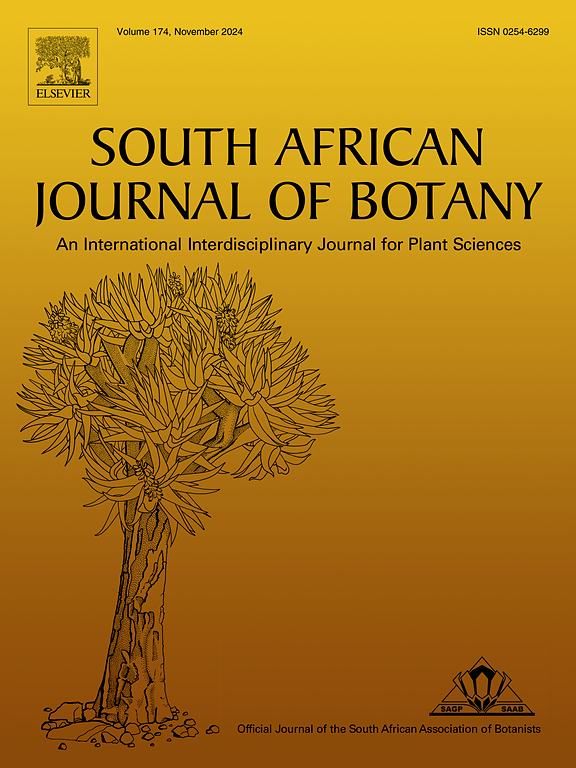Phytochemical characterization and evaluation of the antioxidant, antimicrobial, and In Vivo protective effects of Ulva lactuca extracts from the Algerian coast
IF 2.7
3区 生物学
Q2 PLANT SCIENCES
引用次数: 0
Abstract
Marine macroalgae are increasingly recognized as valuable sources of bioactive compounds with potential applications in food, pharmaceutical, and biomedical fields. In this context, Ulva lactuca from the Algerian Mediterranean coast was investigated for its phytochemical profile and biological effects. The methanolic extract showed higher yields of phenolics (45.8 mg GAE/g), flavonoids (10.5 ± 1.1 mg QE/g), and tannins (15.7 ± 1.5 mg TAE/g) compared to the oil extract. Antioxidant assays confirmed superior activity of the methanolic extract with lower IC₅₀ values in DPPH (69.3 ± 1.8 %), ABTS (70.5 ± 1.6 %), and CUPRAC (213.7 mg TE/g) tests. Antimicrobial activity was notable against Staphylococcus aureus (14 mm), Candida albicans (10 mm), and Escherichia coli (9 mm), while the oil extract showed stronger inhibition against E. coli (13 mm). In vivo, both extracts significantly reduced ALT, AST, ALP, and bilirubin levels, lowered lipid peroxidation (MDA), and enhanced antioxidant defenses (SOD, CAT, GSH). Histological analysis confirmed hepatoprotective effects. These findings highlight U. lactuca, particularly its methanolic extract, as a promising natural source of antioxidants, antimicrobial agents, and liver-protective compounds.
阿尔及利亚海岸Ulva lacuca提取物的抗氧化、抗菌和体内保护作用的植物化学表征和评价
海洋巨藻作为生物活性化合物的宝贵来源,在食品、制药和生物医学领域具有潜在的应用前景。在此背景下,研究了阿尔及利亚地中海沿岸的Ulva lactuca的植物化学特征和生物效应。甲醇提取物的酚类物质(45.8 mg GAE/g)、类黄酮(10.5±1.1 mg QE/g)和单宁(15.7±1.5 mg TAE/g)含量均高于油提取物。抗氧化试验证实,甲醇提取物在DPPH(69.3±1.8%),ABTS(70.5±1.6%)和CUPRAC (213.7 mg TE/g)测试中具有较低的IC₅0值,具有优越的活性。对金黄色葡萄球菌(14 mm)、白色念珠菌(10 mm)和大肠杆菌(9 mm)的抑菌活性显著,对大肠杆菌(13 mm)的抑菌活性较强。在体内,两种提取物均显著降低ALT、AST、ALP和胆红素水平,降低脂质过氧化(MDA),增强抗氧化防御(SOD、CAT、GSH)。组织学分析证实其肝保护作用。这些发现突出了乳葡菌,特别是其甲醇提取物,作为抗氧化剂,抗菌剂和肝脏保护化合物的有前途的天然来源。
本文章由计算机程序翻译,如有差异,请以英文原文为准。
求助全文
约1分钟内获得全文
求助全文
来源期刊

South African Journal of Botany
生物-植物科学
CiteScore
5.20
自引率
9.70%
发文量
709
审稿时长
61 days
期刊介绍:
The South African Journal of Botany publishes original papers that deal with the classification, biodiversity, morphology, physiology, molecular biology, ecology, biotechnology, ethnobotany and other botanically related aspects of species that are of importance to southern Africa. Manuscripts dealing with significant new findings on other species of the world and general botanical principles will also be considered and are encouraged.
 求助内容:
求助内容: 应助结果提醒方式:
应助结果提醒方式:


